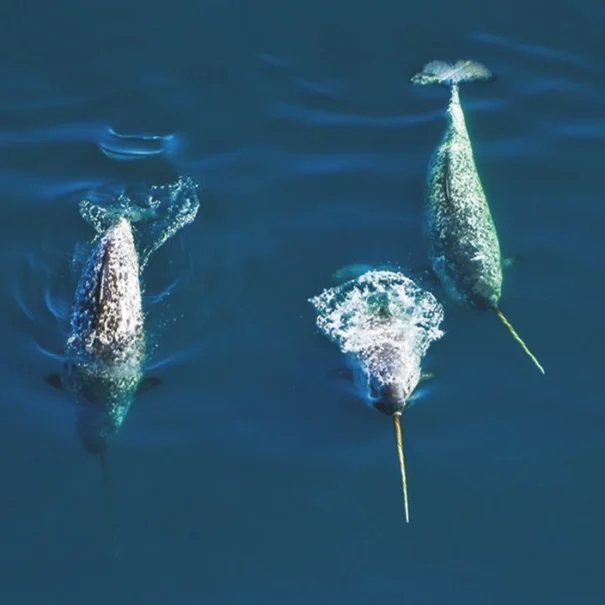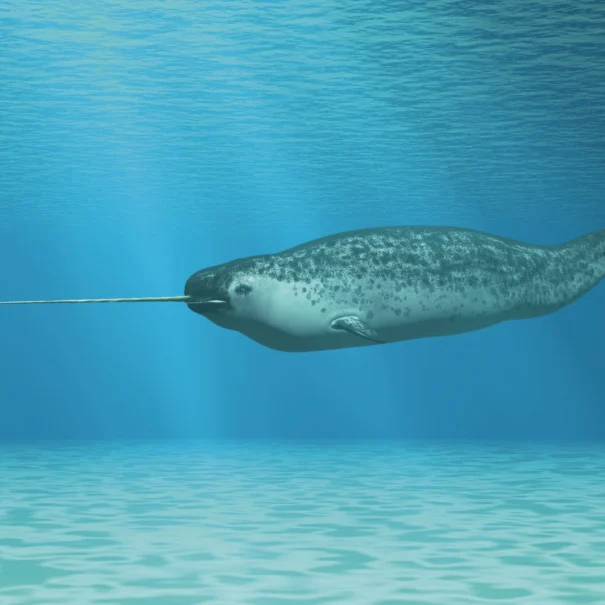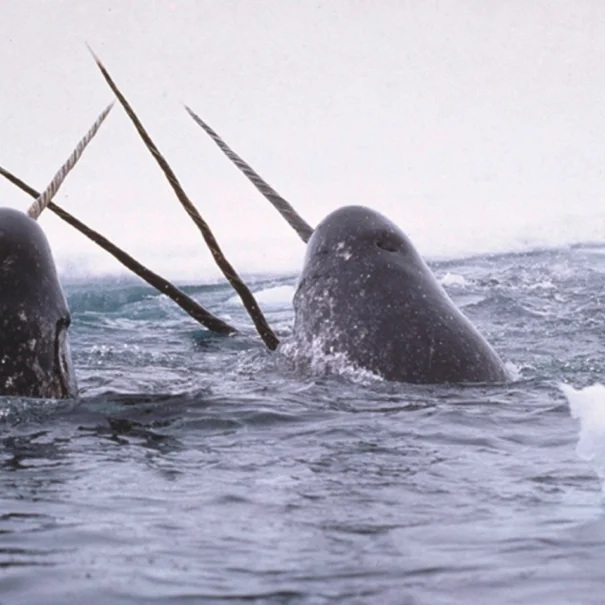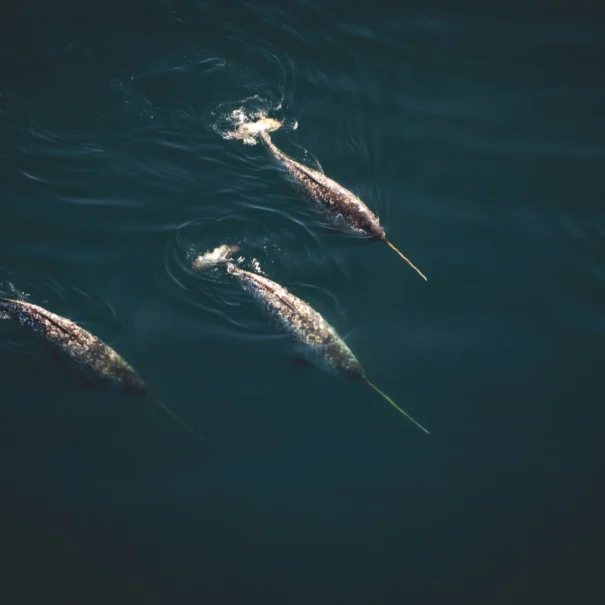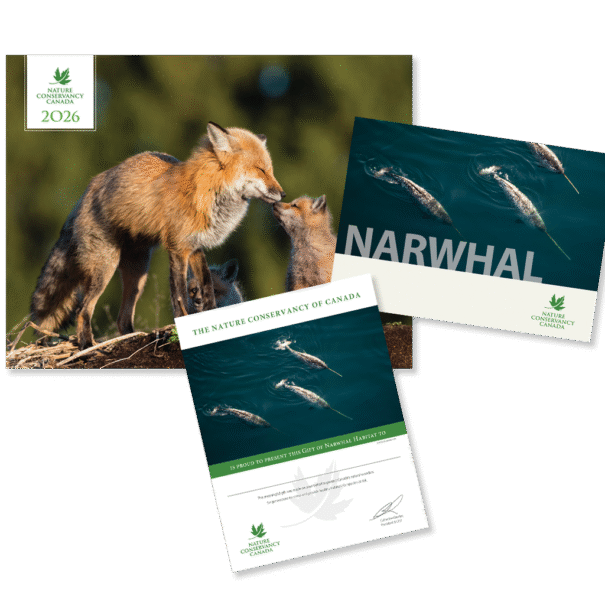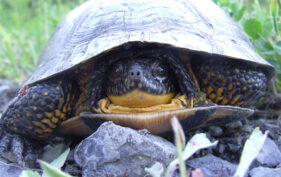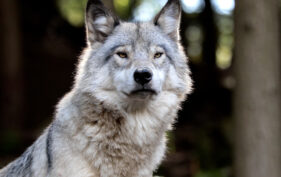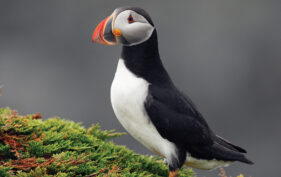Narwhal
Known as the “unicorns of the sea,” narwhals are a medium-sized whale that lack a fin on their back. In most males, the right tooth remains in the skull, while the left tooth grows as a spiral tusk that can measure up to three metres long.
Narwhals primarily inhabit the Arctic Ocean in northeastern Canada, as well as northern Greenland, Svalbard and northern Russia into the East Siberian Sea.
Gift details
Digital download includes:
- Digital species booklet
- Digital full-colour certificate
- Informational video
Physical package includes:
- 2026 NCC calendar
- Species booklet
- Full-colour certificate
Need to ship to multiple addresses? Visit the FAQ page for more information.
Your Gift in Action
Your gift will conserve critical habitats and ensure a future for species at risk. It will also build healthier, more resilient ecosystems that provide essential benefits and services to people and their communities, while countering the effects of climate change and biodiversity loss.
Since 1962, NCC has brought Canadians together to conserve and restore more than 15 million hectares, coast to coast to coast. But we must do more faster and accelerate the pace of conservation. Every gift and donation counts.
Narwhal
Known as the “unicorns of the sea,” narwhals are a medium-sized whale that lack a fin on their back. In most males, the right tooth remains in the skull, while the left tooth grows as a spiral tusk that can measure up to three metres long.
Narwhals primarily inhabit the Arctic Ocean in northeastern Canada, as well as northern Greenland, Svalbard and northern Russia into the East Siberian Sea.
Narwhals were previously listed as a species of special concern in Canada, but their population has stabilized over the last two decades. Industrial activities, climate change, environmental contaminants and, in some areas, hunting may still threaten narwhal populations.
Photo 1 Mario Cyr; Photo 2 Illustration Can Stock Photo/Digitalstudio; Photo 3 Glenn Williams/Wikimedia Commons; Photo 4 Mario Cyr

